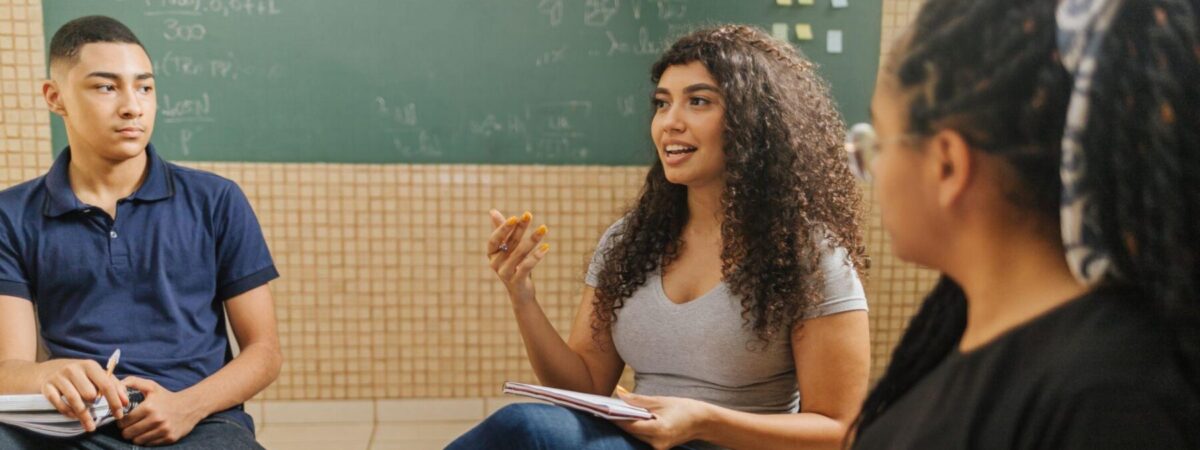
Moreover, since classroom observations are conducted infrequently they typically only provide a brief, time-limited snapshot of instructional practice. This led us to explore how AI-powered apps compared to traditional classroom observations in capturing peer interaction, and what AI tells us about different teaching styles in introductory statistics courses.
In our recent study4, we worked with six instructors from a public university in the northeastern United States to useTeachFX, an AI-powered app, to record at least six classes during the semester. Spoiler alert—we found that these classes were mostly lecture-based with very little student interaction, but there was promising news into how AI could impact these interactions at scale.
The TeachFX tool transcribes classroom audio and provides reports that quantify teacher and student talk time, as well as group discussions and questions. To learn about accuracy, we also conducted in-person observations using an adapted protocol that captures different instructor and student behaviors.
The findings were revealing. In-person observations showed that instructors spent 86% of the time lecturing, while student questions accounted for only 13% of the time. The data revealed that instructors talked for 68% of the time, with student talk making up just 4%. Both methods confirmed that these classes were heavily teacher-centered with minimal student interaction. While there are still lingering questions about the nature of student engagement, AI proved to be a promising tool for collecting data on instructional practices at scale.
This exploratory study is an introductory step into exploring if AI can serve as a valuable tool for researching classroom interactions, thus giving insights to educators on ways to adapt their instruction to better engage students. While it offers a scalable alternative to traditional classroom observations, allowing for data collection without the usual limitations, it does have the potential to leave out important nuances. Within Statistics Teaching and Technology Studies (STATS), and beyond, we’re excited to further explore this advancement in our understanding of teaching and learning processes in higher education.
Learn more about the STATS project on our website.
Xu, E., Wang, W., & Wang, Q. (2023). The effectiveness of collaborative problem solving in promoting students’ critical thinking: A meta-analysis based on empirical literature. Humanities and Social Sciences Communications, 10(16). https://doi.org/10.1057/s41599-023-01508-1
Crouch, C. H., & Mazur, E. (2001). Peer instruction: Ten years of experience and results. American Journal of Physics, 69, 970–977. https://doi.org/bb9v9v
Lee, C., Li, H.-C., & Shahrill, M. (2018). Utilising the Think-Pair-Share technique in the learning of probability. International Journal on Emerging Mathematics Education, 2(1), 49-64. http://dx.doi.org/10.12928/ijeme.v2i1.8218
Peters, V., Pressler, E., Neisler, J., & Means, B. (2024). What conversational AI can (and can’t) tell us about peer interaction in higher education. In R. Lindgren, T. I. Asino, E. A. Kyza, C. K. Looi, D. T. Keifert, & E. Suárez (Eds.), Proceedings of the 18th International Conference of the Learning Sciences – ICLS 2024 (p. 2479-2480). International Society of the Learning Sciences.